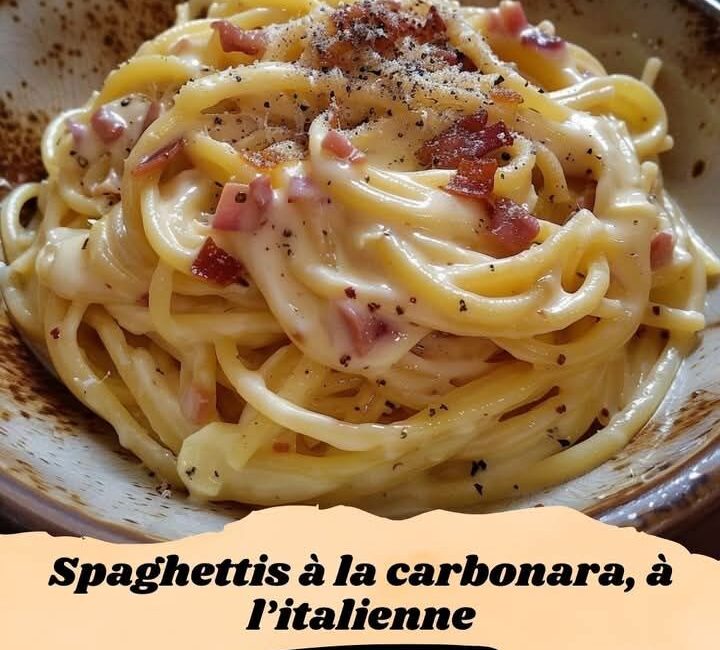Spaghetti alla Carbonara is one of the most beloved dishes in Italian cuisine, particularly in Roman cuisine. Simple yet deeply flavorful, this dish has stood the test of time and has become a global classic. There is no mystery behind its success: Spaghetti alla Carbonara is the perfect blend of simplicity and culinary sophistication. However, like many traditional recipes, Carbonara has been subject to numerous variations over the years. This dish, whose origins date back centuries, is a true gem of Italian gastronomy. In this article, we will explore the history of Carbonara, the traditional ingredients, the preparation technique, and a few tips for creating an authentic Carbonara just like in Rome.
1. The History of Spaghetti alla Carbonara
The history of Carbonara is one full of mysteries and controversies. First, it is important to note that Carbonara did not exist before the 20th century, unlike other dishes such as lasagna or pizza. The recipe we know today was created in Rome, but its exact origins are open to much speculation.
One of the most popular theories about the origin of Carbonara is related to World War II. According to this hypothesis, American soldiers brought powdered eggs to Italy during their occupation, which led to the creation of the dish. The soldiers, who carried rations made of powdered eggs and bacon, would have combined them with Italian pasta to create a simple and nourishing meal. Guanciale, the traditional ingredient in Carbonara, was added to give flavor and texture.
Another theory suggests that the charcoal workers (carbonari), who worked in the mountains and forests around Rome, prepared a dish made from pasta, eggs, and pork that they called “Carbonara.” This simple yet nourishing dish was a practical way for the workers to transport a complete meal during their long days of labor.
Whatever the case, the name “Carbonara” likely comes from the Italian word “carbone”, meaning coal, in reference to the charcoal industry or the dark color of the freshly ground black pepper that traditionally adorns the dish.
Today, Carbonara is a globally recognized dish, cherished not only in Italy but also in many countries around the world. However, its preparation remains true to its Roman roots.
2. The Traditional Ingredients of Carbonara
While many variations exist in restaurants worldwide, it is essential to remember that true Carbonara contains only a few basic ingredients. Here is what you need to make an authentic Carbonara:
2.1. Spaghetti or Long Pasta
Spaghetti is the type of pasta traditionally used to make Carbonara. Its long shape allows the creamy sauce to coat the pasta beautifully. Of course, you can use other long pasta types such as linguine or fettuccine, but spaghetti remains the traditional choice.
2.2. Guanciale
Guanciale, an Italian cured meat made from pork jowl, is the essential ingredient in traditional Carbonara. It is rich in fat and has a melt-in-your-mouth texture that blends perfectly with the pasta. Guanciale has a more delicate and less salty flavor than pancetta, but it is much more flavorful. If you can’t find guanciale, pancetta can be used as a substitute, although it doesn’t bring the same depth of flavor.
2.3. Eggs
Eggs are the key ingredient for creating the creamy sauce in Carbonara. Traditionally, fresh eggs are used, typically just the egg yolks, though some people use a whole egg. The eggs, when mixed with cheese and pepper, create a rich, velvety sauce that coats the pasta perfectly.
2.4. Cheese
The cheese used in Carbonara can either be Pecorino Romano, a strong, salty sheep’s milk cheese, or Parmesan, which is milder. Traditionally, Pecorino is the preferred choice in Rome, but some prefer a blend of the two. The cheese should be finely grated to blend easily with the eggs.
2.5. Freshly Ground Black Pepper
Click page 2 for more




